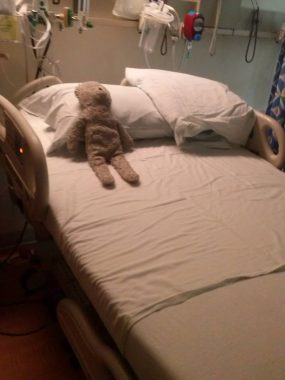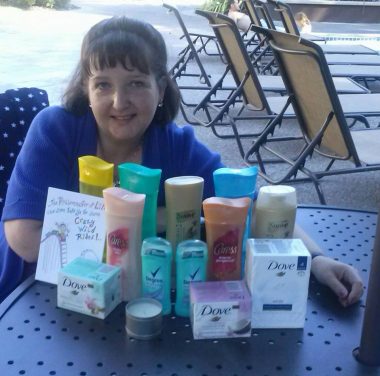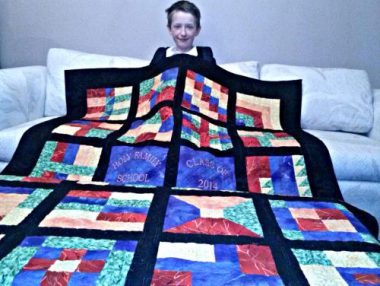Tips on How to Handle PH and Transplant Baggage

What is baggage? According to Merriam-Webster, it’s one of three things: suitcases, transportable equipment, or intangible things such as feelings and circumstances that get in the way. What kind of baggage do people living with pulmonary hypertension (PH) often take everywhere they go?
The answer: all of it!
In addition to emotional baggage, they have the burden of emergency preparedness and must have a suitcase packed and medical equipment and supplies ready for an unplanned trip to the hospital.
My son Cullen was diagnosed with PH in 2008. I had a packed suitcase in my car and an emergency grab-and-go list in my purse for six years.
Packing for PH
Hospital visits close to home in Washington state weren’t too difficult to prepare for, but appointments with Cullen’s PH specialist in California took some planning. Those visits usually included at least a week’s worth of testing and sometimes a right-heart catheterization.
The Pulmonary Hypertension Association offers a “must-have” list for emergency kits that I used to pack in our car for the trips to California.
Cullen’s Flolan (epoprostenol GM) supplies were the most necessary items. In a previous column, I shared how my husband, Brian, and I organized the various Flolan supplies into gallon-sized Ziploc bags every month. We stored them in a laundry basket, making packing the car for trips more manageable and eliminating the concern of forgetting something important.
Taking on more baggage
In 2013, we listed Cullen for a heart and double-lung transplant at Stanford Hospital. He could remain at home in Washington while waiting for the transplant call, but we had to be ready to board an air ambulance or a commercial plane at a moment’s notice, and then plan to remain in California for at least three months for post-transplant recovery.
Cullen received his transplant almost a year after being listed, and it was not easy to remain packed and ready the entire time. A month before his life-saving surgery, Cullen experienced a “dry run.” After a visual inspection of the donated organs, the transplant team determined that they were not viable for transplant and canceled the surgery. It was a heartbreaking experience and a lesson that prompted some changes in how I packed for the next transplant call.

Cullen’s bear, Curly, waits for him to return with a new heart and lungs on Aug. 7, 2014. (Photo by Colleen Steele)
Packing for transplant
The second time around, I did my best to keep baggage to a minimum because the caregiver is stuck with it until the surgery is over and they settle the patient in the intensive care unit.
Lugging around our large and heavy rolling suitcase, duffle bag, and laptop carrier was exhausting. Another PH transplant mom rescued me by keeping our things in her daughter’s hospital room until Cullen had his own.
If you are on a transplant waiting list out of state or are the caregiver for someone who is, heed my advice. My son’s dry run persuaded me to rethink our pre-packing strategy.
Neither patient nor caregiver needs a lot of clothes, but pack enough for the first two weeks because even the caregiver likely won’t have the time or energy to do laundry until then. You can always buy more clothing later or ask a family member to mail you what you need from home.

Colleen receives a thoughtful care package of toiletries during Cullen’s transplant recovery in California, in September 2014. (Courtesy of Colleen Steele)
Keep toiletries to a bare minimum because you can get most of what you need at the hospital gift store, and then worry about stocking up on supplies once the patient is discharged.
When family and friends offer help, let them know that gift cards come in handy, not just for food and entertainment, but also for purchasing whatever clothing, toiletries, bedding, and cleaning and cooking supplies you need.
Remember that after transplant, the patient will no longer have PH. They probably won’t need more than a week’s worth of medications and supplies, but it’s best to ask your PH doctor how much you should bring.
Do pack the laptop, handheld gaming systems, and cellphones. Don’t forget power cables. I recommend an extra-long phone charger, as a charger shorter than 10 feet might not reach the patient’s bed.

Cullen receives a quilt made by classmates in March 2014. (Photo by Colleen Steele)
The bulky items we packed were a keepsake quilt made by the students in Cullen’s eighth-grade class, a zebra-print pillowcase sewn by a dear PHriend, a stuffed bear named Curly that had been with Cullen since his PH diagnosis, and a cozy tie blanket that co-workers made for me. These items provided as much emotional support as physical comfort, so keep in mind that some baggage is worth the weight.
And whatever you do, don’t leave behind hope — keep it with you at all times!
Note: Pulmonary Hypertension News is strictly a news and information website about the disease. It does not provide medical advice, diagnosis, or treatment. This content is not intended to be a substitute for professional medical advice, diagnosis, or treatment. Always seek the advice of your physician or other qualified health provider with any questions you may have regarding a medical condition. Never disregard professional medical advice or delay in seeking it because of something you have read on this website. The opinions expressed in this column are not those of Pulmonary Hypertension News or its parent company, Bionews, and are intended to spark discussion about issues pertaining to pulmonary hypertension.









Leave a comment
Fill in the required fields to post. Your email address will not be published.